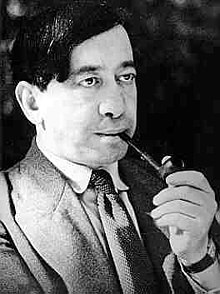“From Caligari to Hitler” is probably the best-known and perhaps even the most important essay on film in the Weimar Republic. It was written by Siegfried Kracauer, the famous German film theorist and founder of the sociology of film. And indeed, it appears fitting: Kracauer’s title hints at a temporal sequence – from the beginnings of the film industry in the Weimar Republic through its development towards an imminent end, represented by Adolf Hitler himself, although many were involved alongside him, of course. At the same time, this title can also be seen as more programmatic.
This period saw everything, from absolute avant-garde to absolute propaganda. Homeland kitsch and horseplay, cinematographic art and social critique, political leanings of every kind. Anyone who has never watched a film from this period will be surprised at the self-evidence with which themes like the self-confident woman, sexuality or abortion are tackled.
A successful industry
In artistic terms, a number of titles from the Weimar Republic era are among the most interesting films in the history of cinema. There was considerably less pandering to tastes and expectations, bringing with it certain freedoms, and more opportunity for self-definition and trying new things. But make no mistake! Politically and economically, the Weimar Republic era was, of course, the period between the two World Wars. This circumstance also influenced film production. By the end of the 19th century a hugely lively and successful industry had developed within the German Empire, which spawned – not least – filmmakers like Fritz Lang (who, many years later, famously rejected Joseph Goebbels’ offer to be director-in-residence to Hitler).

Siegfried Kracauer, Image via wikimedia.org/wikipedia/commons
This circumstance also influenced film production. By the end of the 19th century a hugely lively and successful industry had developed within the German Empire, which spawned – not least – filmmakers like Fritz Lang (who, many years later, famously rejected Joseph Goebbels’ offer to be director-in-residence to Hitler).
New challenges
Shortly before the beginning of the Weimar Republic, Universum Film AG was founded, known as UFA for short. During the War its productions had helped to bring the population into line politically through films exalting the motherland. The end of World War I brought new challenges. Suddenly the import embargo on foreign films no longer applied, and at the same time German productions were now banned in many countries. Expensive film productions were risky and could soon result in bankruptcy for investors.

Fritz Lang with Curt Courant (centre) on the set of Woman in the Moon, Image via: wikimedia.org/wikipedia/commons/
Yet not even this could dent the endless source of ideas and the thirst for action. The artistic and social upheavals were manifested in extreme productivity. Around 250 films were produced on average every year, and multiplied by the 14 years of its existence, this means around 3,500 films were made during the Weimar Republic.
Emigration
Many of the filmmakers of this period emigrated abroad before or shortly after the end of the Weimar Republic, either forcibly or of their own free will. Not all this emigration was directly linked to Hitler’s rise to power; for some it was simply the increasingly nationalistic and anti-Semitic mood in the country that drove them away, while others wanted to take advantage of the opportunity to try their luck in Hollywood. Fritz Lang, Josef von Sternberg and Friedrich Wilhelm Murnau, as well as actors like Marlene Dietrich, soon forged careers in Hollywood – many never went back to Germany. Incidentally, this is to be the theme of a major exhibition at Museum Ludwig in Cologne from March 2018: Emigration – Film – Politics.

Marlene Dietrich in Shanghai Express, Image via wikimedia.org/wikipedia/commons

Digitorial to the exhibition
The free digitorial provides you with background information about the key aspects of the exhibition "Splendor and Misery in the Weimar Republic".
For desktop, tablet and mobile.